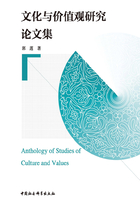
Discussion
Based upon a statistic analysis of data,90% questions from Chinese respondents and 87% from Swedish respondents in the questionnaire concurrent with Hofstede's 4-D model of cultural differences,and a qualitative analysis of the comments it is reasonable to interpret the present study as providing support for Hofstede's findings in 1980 and Hall's work on the dimension of context-concerned communication processes of different cultures.It also leads to a conclusion that Hofstede's work on four dimensions of cultural differences and Hall's are reliable and valid as far as this empirical study is concerned.
It is a surprise to find that there is such a coincidence in the Chinese and Swedish respondents’choices of questions 5,10,20,which are all identically contradictory to Hofstede's survey results.
Meanwhile,readers’attention should be paid to the limitation of the research since all the Chinese students who attended the investigation had received their undergraduate education in China and are,at present,pursuing or finished their graduate studies in Sweden,and therefore their choices on the questions were decided by their experiences of undergraduate studies in China and graduate ones in Sweden,which might affect the findings.Therefore similar studies need to be carried out in the students with the same level of education to make a fairer comparison.The difference between the Chinese and Swedish students’English level and the Chinese students’less exposure to investigations than the Swedish students’should also be taken into consideration.
Moreover,the reasons for the low feedback(50%)of the survey from Chinese respondents needs a further inquiry.The telephone interviews by the author after the deadline of the submission of the questionnaire reveal that Chinese people are more person-oriented than task-oriented.Several reasons for not replying the questionnaire in time were brought up and disclosed with a strong tendency toward the interpersonal relationships rather than the questionnaire itself.To illustrate,two respondents said that the author should have introduced herself to them at a party held by the Chinese Student Association,thus giving them more chance to know her and then distributed the questionnaire.Other two respondents showed more concerns for other people's attitude to the questionnaire by asking the questions on the number of questionnaire replies and opinions of others.Still another one showed a strong interest in the purpose,background,and formality of the investigation though an explanation letter in Chinese had been attached to each questionnaire.Most of the questionnaire receivers contributed their reasons for a delay of the questionnaire,when interviewed by telephone,to the busyness of their study and work,which is considered as a most acceptable excuse in Chinese people's eyes.Among thirty unanswered subjects,fifteen have moved to other places;four are guest researchers and have returned the questionnaire with the argument that they have no experience in Swedish class therefore can not answer the questions;and five of them cannot be reached due to the incorrect mail addresses given.Finally six of them do not submit their questionnaire for the unknown reasons.
Lastly,it would be also interesting to extend the studies to other teacher-student relationships(Spencer-Oatey,1997),including research supervisor-research student;undergraduate lecturer-undergraduate student;high school teacher-high school student,and primary school teacher-primary school student etc.,to check on the generalizability of the current findings.